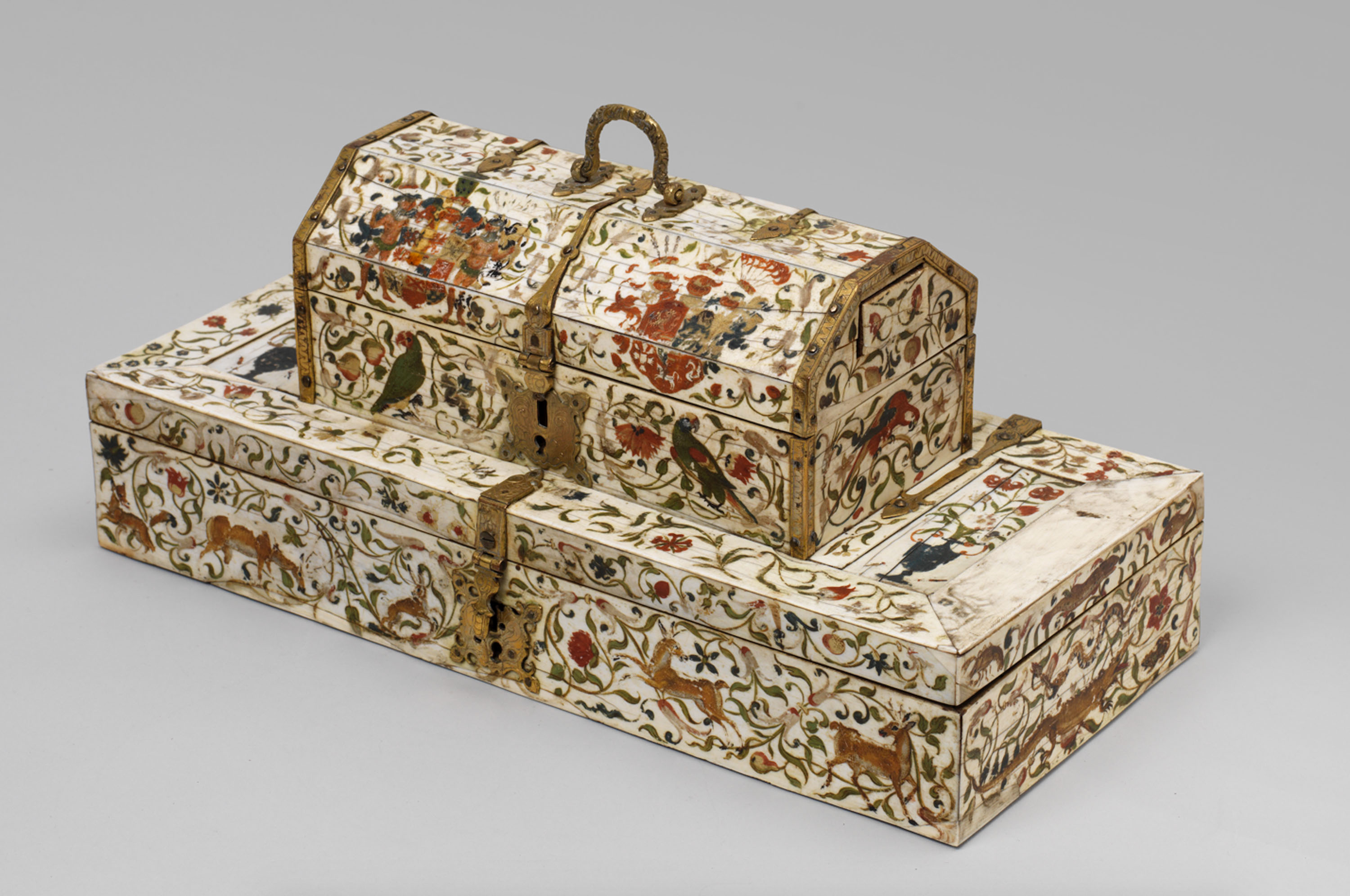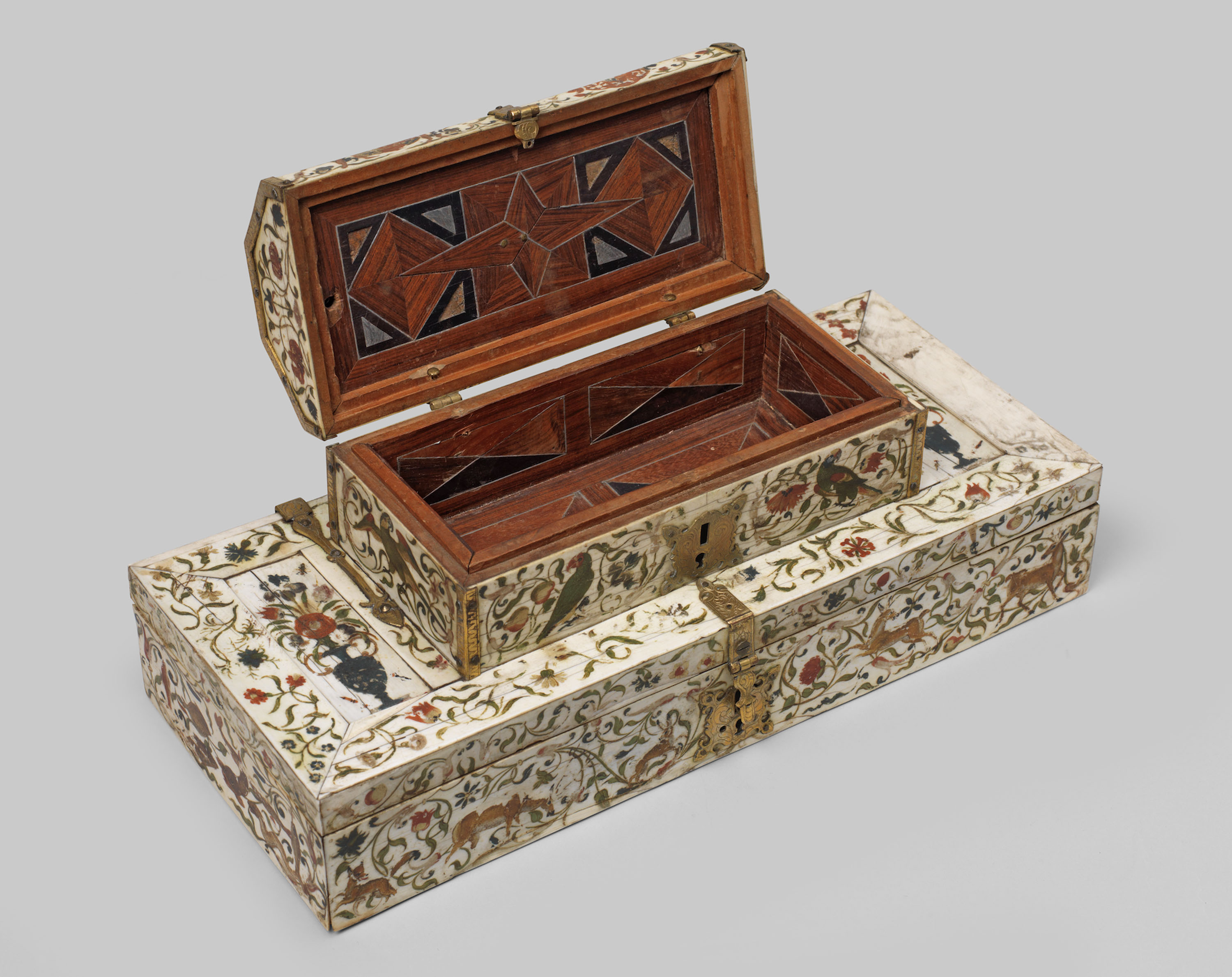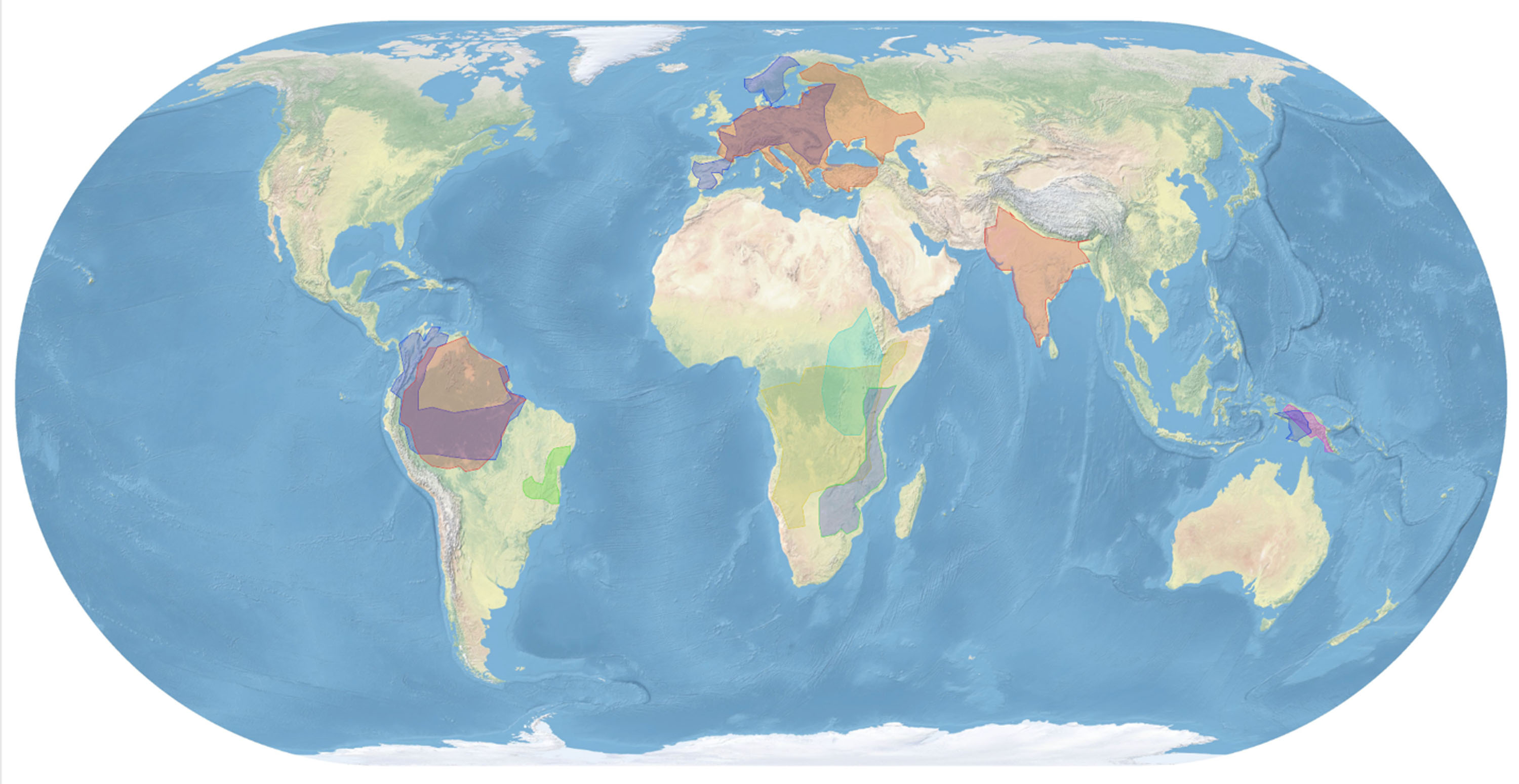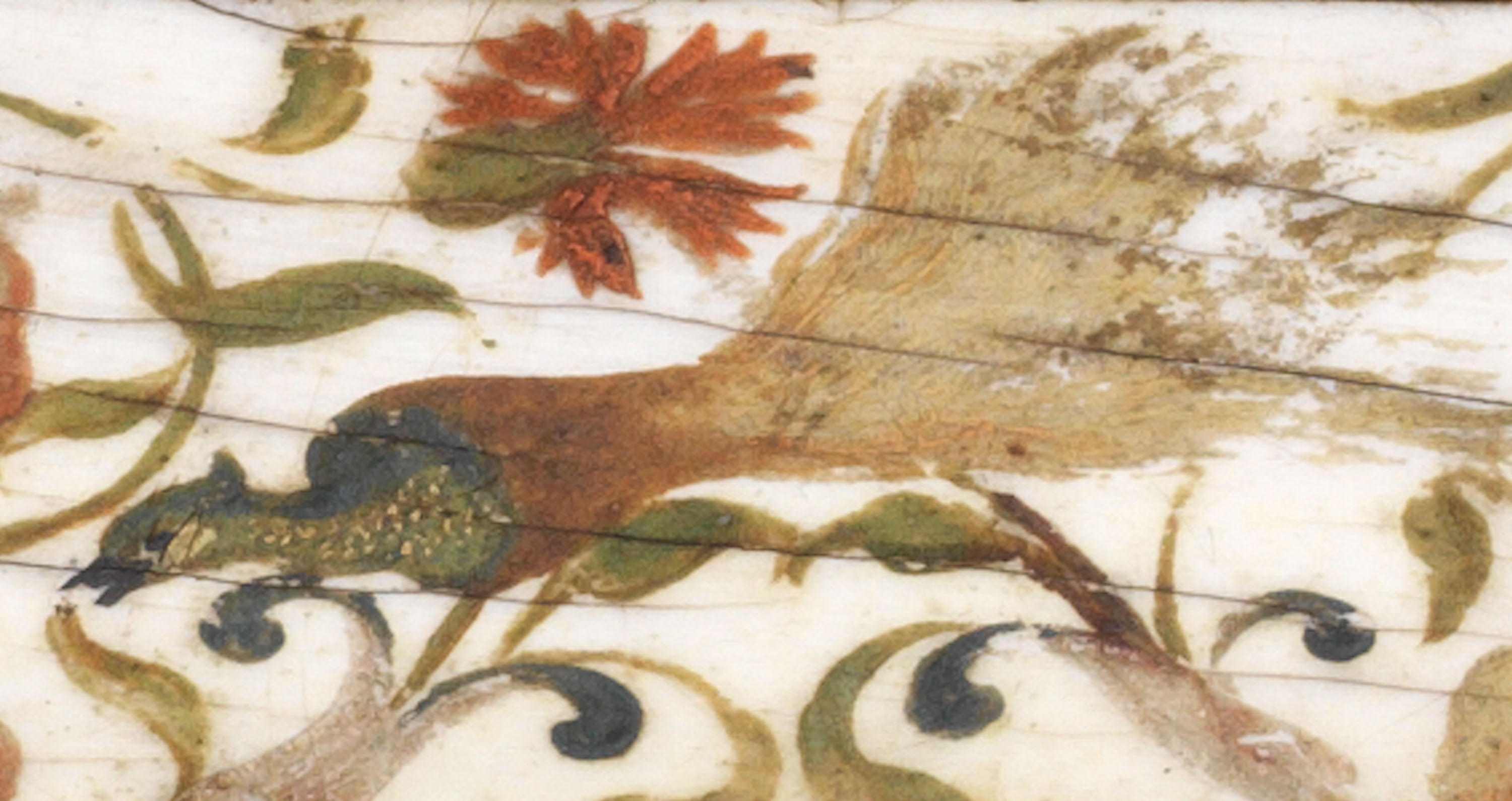The Courtauld Gallery’s painted casket may be just a single object, but it bears witness to the birth of zoology and botany as disciplines and to developments in global trade.
A lot is unknown about this object’s provenance, or record of ownership. But this fascinating object can teach a lot about how scientific knowledge was developed and spread in the 1600s.
This object was very likely made in Augsburg, a city in modern-day Germany, which was Europe’s unofficial home for luxury furniture making in the 1600s. Craftsmen (unfortunately they were all men as far as we know) from Augsburg made elaborate items like cabinets, boxes, and writing desks for aristocratic customers.

In a time before trains or motor vehicles, it may seem curious that a small landlocked city in Germany became a manufacturing hub for goods crafted from imported materials.
But Augsburg was home to wealthy families who got into the business of overseas trade when shipping to Asia and South America became more affordable in the 16th century.
One of the most notorious Augsburg merchants was Konrad Rott, who held monopoly contracts on certain goods imported from Asia, most notably pepper.
Like other Augsburg merchants, he imported goods via Portugal, and half of everything he imported was given to the Portuguese crown in exchange for their cooperation.
When he ultimately went bankrupt due to a fluctuation in pepper prices that his business could not withstand, Rott faked his own death and fled Augsburg to live under a different name in Portugal.

All of the imported materials that make up this object – ivory, ebony, and rosewood – would have been imported by merchants like Rott.
The novelty of materials shipped from far-away places and their relative scarcity in Europe made these imports extremely expensive at the time when this box was made.
Ivory has often been called “white gold” and used to be purchased by the ounce like silver or gold.
Ebony wood, used in the parquetry patterns on the inside of the box’s lids, was so expensive in Europe in the 1600s that it was sometimes imitated with dyed, blackened pear wood to fool buyers.
Rosewood, also used in the parquetry interior, was not commonly imported from South America to Europe until the 17th century. Rosewood can be distilled into oil, and in this form it is a popular scent used in cosmetics.
High demand for rosewood in the 1900s eventually led to global scarcity. International law now prevents the growth of the rosewood market and restricts rosewood trade.
The explosion of imports of expensive materials like rosewood and ebony at the time when this box was created corresponded with significant improvements in trade infrastructure. The expansion of European trade networks also corresponded with an increased ability to gain and share knowledge about other parts of the world.
This box was made in Europe, yet some of the plants and animals painted on its exterior would have never been seen alive in Europe at the time. Assuming that whoever painted this box was European, they would have had to reference the drawings and paintings that others had made of these animals.
In the late 1500s, printed botanical and zoological books with drawings or woodcuts of animals were gaining popularity, but they were still expensive, and only owned by the wealthy or well-connected.
The most famous of these books was a series of six volumes by the Swiss physician Conrad Gessner, who published his Historia Animalium between 1551 and 1558.
Gessner was the first European to describe and depict many plants and animals originating outside of Europe, including the tulip and the bird of paradise.

As soon as one artist created an image of a previously unseen animal, others would copy it into their own books and artwork.
This reliance on other artists’ images in order to depict animals which many people had never actually seen in person meant the perpetuation of many mistakes in how these animals or plants were pictured.
Gessner’s well-known and widely copied drawing of bird of paradise was based on a dead specimen that had been shipped to Europe from its native New Guinea. Birds of paradise often had their limbs removed in local rituals and for preservation as specimens before they were transported to Europe.
As a consequence, Gessner’s drawing (which was widely published as a print in his book), was of a bird lacking wings or legs – as were the drawings by many European artists who came after him.
It was said at the time that these birds must have floated magically in the breeze, only landing when they died, which explained why the skins didn’t appear to have wings or legs. But in reality, the lack of limbs in many drawings may have simply stemmed from the fact that the artists didn’t know what the limbs would have looked like on a live bird.

Systematic mistakes were also made in flower drawings in the 16th and 17th centuries. It was thought at the time that the purpose of flowers was to protect the developing fruit. So, the reproductive organs of flowers were occasionally mis-drawn or omitted, even though we now know that these are the very reason for flowers’ existence. Some of the lilies on this box are painted with visible stamens and pistils, but others are painted without these critical pollen-and ovule-producing features.
Of course, it is not unusual for artists to make art that is not meant to perfectly mirror nature. But these errors are particularly interesting because the artists who created paintings of plants and animals at the time were also some of the first botanists and zoologists.
By systematically indexing and classifying a wide variety of organisms, comparing them, and documenting their characteristics in their books of drawings or paintings, these artists created a new field of scientific inquiry.
At the time, these makers of books about plants and animals were creating and sharing new knowledge—but there was no need to define that knowledge as a discipline, to categorize it as an art or a science, nor to classify the people involved as artists or botanists or zoologists.
Unfortunately, even a wealth of knowledge about the societal and scientific context in which this object was created does not solve the mystery of how, and why, this box came to be.

There are two crests on the top of the box, which are likely the crests of the former owners, but these have been attributed to multiple possible families over time.
The presence of two coats of arms means that it may have been made to celebrate a marriage. The current attribution of one of the crests is to the Dukes of Pommern-Stettin, or Pomerania (which is in modern-day Northern Germany and Poland), and the other is that of the Schleswig-Holstein family.
But there were multiples marriages between these families in the 1600s, so it is difficult to say who it belonged to. And as the owners are unknown, so too are the makers. To add to the mystery, the double-lidded design and decision to paint the box are not terribly common, so what the box was made for is also uncertain.
Curiously, this box documents a variety of knowledge that Europeans held about the wider world in the 1600s when it was created. Yet, this fascinating object will not yield its own secrets easily.

The Courtauld Gallery’s painted ivory marriage casket is on display at the Science Museum (on Level 2) until early 2020 as part of the Illuminating Objects project. You can find out more about this object here.
